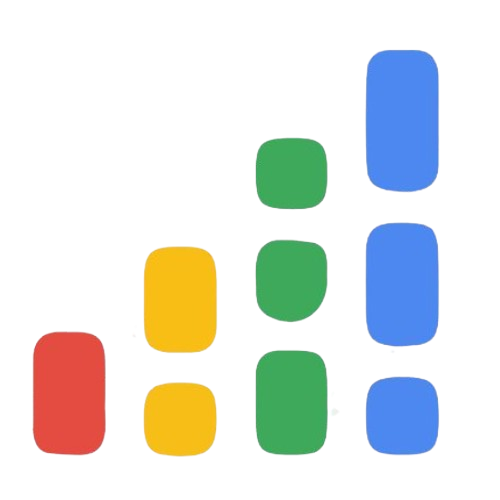When the groundbreaking paper “Attention Is All You Need” was published in 2017 by Vaswani et al., it fundamentally changed the landscape of machine learning and natural language processing (NLP).
This groundbreaking paper proposed the Transformer model, a model that relies on the self-attention mechanism to surpass prior-art methods both in terms of timing and performance.
It is now time to look at how this innovation impacted the field and its main ideas.
What is Attention Is All You Need?
The “Attention is All You Need” paper is a groundbreaking research paper by Vaswani et al. that was published in 2017 which presented the idea of the Transformer model for NLP and machine learning.
It revolutionised how current and future models of AI systems would handle natural language and paved way to the successful models like BERT, GPT, and others.
What Are The Key Aspects Of Attention Is All You Need?
Here are the key aspects of “Attention Is All You Need”:
Launching of Transformer Architecture
The paper presented a new architecture known as the Transformer and jettisoned RNNs and LSTM that defined the form of NLP systems.
However, the Transformer model does not compose input sequences sequentially like an RNN, it uses what are known as self-attention, or just attention, for parallel processing.
Self-Attention Mechanism
The primary novelty of the Transformer is the self-attention mechanism. It enables the model to assign a value of a word in a sentence in comparison to the other words irrespective of the position of such a word.
This allows the model to represent far away information better than RNNs and LSTMs since these models work sequentially and can get loss in longer sequences of values.
In simple terms, this understanding of text helps self-attention to pinpoint out which part of a sentence is important for the other part of a sentence thus improving how a model grasps context.
For instance, in a basic sentence “The cat sat on the mat” attention enables the model to concentrate on the link between “cat” and “sat” and also the construction of the whole sentence.
Introduction Parallelization Efficiency
Due to the fact that a Transformer traverses all words in a sequence at once (as opposed to sequentially as in RNNs or LSTMs) it can take advantage of parallel processing.
This makes it much easier and faster particularly when training on big data sets.
The proposed Transformer model is far less computationally intensive, and it entails less training time for big-scale problems.
Encoder-Decoder Structure
The Transformer model consists of two main components:
Encoder: This part of the model takes as input a sequence (for example, a sentence) and produces for this sequence a set of representations.
Decoder: This part gives out the output sequence based on the encoded form of the input, for instance, a translated sentence in another language.
The structure of encoder and decoder include multiple layers of self-attention units and feed forward neural networks.
Impact on NLP
The Transformer model changed the paradigm of approaches to NLP. It has been the foundation for many state-of-the-art models such as:
BERT (Bidirectional Encoder Representations from Transformers): Transformer-2 model for language context, that has been applied in numerous tasks, including sentiment analysis, question answering, and others.
GPT (Generative Pre-trained Transformer): A system designed to produce natural language, and serves as a tool in developing products such as chatbots, writing tutors, and creative text producing tools.
Transformers were also the cause of the development of transfer learning, where pre-trained models are further tuned for certain tasks as they are more efficient when used in many applications.
The Problem with Traditional Models
Before the advent of the Transformer model, recurrent neural networks (RNNs) and their variants, such as Long Short-Term Memory networks (LSTMs), were the dominant architectures for NLP tasks.
However, these models faced significant limitations:
Sequential Processing
Traditional models processed text sequentially, making them computationally expensive and slow to train, especially for long sequences. This dependency on sequence order limited their scalability.
Difficulty with Long-Range Dependencies
RNNs struggled to capture relationships between words that were far apart in a sequence. This led to a loss of contextual understanding in complex texts.
The researchers behind “Attention Is All You Need” sought to address these challenges with a model that prioritized efficiency and performance.
The Transformer Architecture
The Transformer model, introduced in the paper, brought a paradigm shift by entirely replacing recurrence with Attention Is All You Need or self-attention mechanisms and enabling parallel processing. Its architecture consists of an encoder-decoder structure, each with unique components.
Encoder-Decoder Framework
The Transformer’s encoder takes an input sequence and creates a context-rich representation, while the decoder generates the output sequence based on this representation. Both rely on self-attention mechanisms for understanding relationships between words.
What Are The Key Components of the Transformer?
Multi-Head Self-Attention
This mechanism allows the model to focus on different parts of the input simultaneously, capturing various contextual nuances.
For instance, when processing the word “river,” the model might attend to nearby words like “flowing” and “water” to understand its meaning.
Positional Encoding
Unlike RNNs, the Transformer doesn’t process data sequentially. To account for word order, it uses positional encoding to add information about the position of each word in a sequence.
Feedforward Neural Networks
After Attention Is All You Need, the outputs pass through feedforward layers for further processing, enhancing the model’s ability to generalize.
Residual Connections and Layer Normalization
These features help stabilize the training process and improve model performance by preserving information and speeding up convergence.
🔖 ScribeHow : Ultimate Tool for Creating Step-by-Step Guides
Why Self-Attention Is a Game-Changer?
The self-attention mechanism lies at the heart of the Transformer’s success. It allows the model to determine the importance of each word in a sequence relative to others, enabling it to capture relationships across long distances.
For example, in the sentence, “The cat, which was sitting on the mat, purred softly,” self-attention helps the model link “cat” to “purred,” despite the intervening words.
Advantages of Attention Is All You Need
Parallel Processing: Unlike RNNs, self-attention processes all words in a sequence simultaneously, drastically improving computational efficiency.
Contextual Understanding: The mechanism captures relationships across the entire sequence, making it adept at understanding context.
What Are The Applications of the Transformer Model?
Since its introduction, the Transformer has become the backbone of numerous state-of-the-art NLP models. Its applications span a wide range of tasks:
Language Translation
The Transformer’s ability to understand context and long-range dependencies has made it a cornerstone of machine translation systems, such as Google Translate.
Text Summarization
By identifying the most relevant parts of a text, Transformer-based models can generate concise and coherent summaries, aiding content creators and researchers.
Sentiment Analysis
Transformers excel at understanding sentiment and tone in text, enabling businesses to analyze customer feedback and social media trends effectively.
Question Answering and Chatbots
Transformers power conversational AI and question-answering systems, such as virtual assistants and customer service bots, by providing accurate and context-aware responses.
The Transformer’s Legacy: BERT, GPT, and Beyond
The Transformer architecture laid the foundation for many advanced models that dominate today’s AI landscape:
BERT (Bidirectional Encoder Representations from Transformers)
BERT builds on the Transformer’s encoder to achieve a bidirectional understanding of the text. This means it can consider a word’s left and right context, making it highly effective for tasks like text classification and entity recognition.
GPT (Generative Pre-trained Transformer)
GPT focuses on the decoder side of the Transformer and is designed for text generation. It has powered applications ranging from creative writing to code generation.
T5 and Others
Models like T5 (Text-to-Text Transfer Transformer) generalize tasks into a text-to-text format, enabling versatility across a wide range of NLP problems.
Broader Impacts and Future Directions
The principles outlined in “Attention Is All You Need” have extended beyond NLP to fields like computer vision, speech processing, and even protein folding (as seen in DeepMind’s AlphaFold).
Challenges Ahead
Despite its success, the Transformer model faces challenges:
✔️ Computational Costs: Training large-scale Transformer models requires significant computational resources, making them inaccessible to smaller organizations.
✔️ Data Dependency: Transformers need massive datasets to perform effectively, which can limit their application in niche domains.
Future Innovations
Researchers are exploring ways to make Transformer models more efficient and adaptable, ensuring their continued impact across diverse fields.
Conclusion
The paper “Attention Is All You Need” introduced a model that not only addressed the limitations of previous approaches but also set the stage for unprecedented advancements in AI.
By prioritizing attention mechanisms, the Transformer model unlocked new possibilities for understanding and generating human language, revolutionizing industries, and redefining what machines can achieve.
As the field continues to evolve, the legacy of this work will undoubtedly shape the future of AI.



